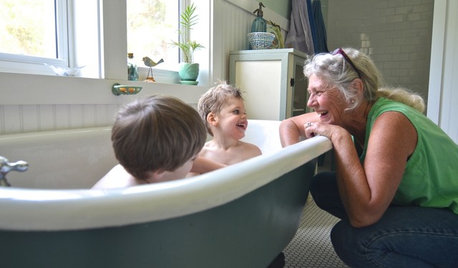Hello All,
I am looking for some advice. I have been reading alot lately and maybe a few people here can help.
I got into growing peppers more than ever this season since I started to learn about canning last year. I had a veggie garden since 2005. But only last year starting experimenting with canning hot cherry peppers since a friend of mine does it every year. So this year I ended up with almost 35 pepper plants of all different varieties. Some are just for eating right away, roasting or grilling like bells, poblanos, anaheims, etc. Then for canning, I have jalapenos, habeneros, portugese hot peppers, bananas, chilis, cherry bombs, italian long peppers and scotch bonnets.
So I first started harvesting back in late July and the harvest continues will great yields today. So last year I was told of this "old school" canning method and it sounded fine I guess and I have been using it. But as I have been reading, it sounds like I am skipping steps.
This is the method I was taught since this was the way my friend's uncle has done it for many years and he is 85 now. So I said OK, not really knowing any other way.
Harvest the peppers, wash them and let them dry
I use pint and quart Bell mason jars. I wash all pieces. Now some I just washed by hand and the rest I placed in the dishwasher. The dishwasher of course is the best since it santizes...but my friend said either way is fine.
So then I take a jar and add spices. I use salt, pepper, pickliung spices, oregano, sometimes fresh garlic and fresh rosemary.
I then start packing the peppers. As tight as I can pack them. I mix it up with a variety of peppers. As I get to the top, I then take distilled white vinegar and fill the jar almost half way. Then I fill the rest with filtered water. I get the mixture right to the top of the rim. I wait to see if the level dips a bit and I top it off again. Then I take the lid and apply pressure to keep it down and press any peppers that may have been sticking up a bit and then place the screw ring on it. I seal it tight and shake up the jar to mix the water and vinegar and the spices. Usually after that I notice that the level sometimes drops a bit, so I top it off with a bit more vinegar. I rinse the outside of the jar, dry it and label it with the date.
I then began to store them in my kitchen on the counter. I have good counter space and a granite top, so it stays cool. It is not a permanent spot, I will then move them to the basement.
So here is the deal, this is the way I was taught, but after reading so many sites, it seems this old school method may not be the safest! My friend has been doing doing this forever with no issues. But the more I read, I hear about boiling the jars, boiling the solution before adding to the jars, pressure canning, botchulism, etc.
I was always told since vinegar is being used, you shouldnt have to worry about botchulism. But now I dont know.
So the question is....am I playing with fire this way? The peppers look great and another reason my friend does not seal them cause he said after jarring, you will see in a few weeks that the levels go down since the peppers are soaking up the solution, so he adds more.
Now I have a bunch of quart jars done and they all look great from 7/22 till now all except for one. Which looks and smells fine, but I noticed at the very bottom of the jar, some white slimy substance was forming there. Very weird and my friend never saw or heard of it. But it didnt look right. It was only on the bottom and the peppers looked fine. But as I picked up the jar and turned it upside down, it started to spread and make the solution cloudy. That particular jar was only done on 8/27. But besides that, all other jars are fine.
So since the process was already done with over a dozen jars, to be sure there is no trace of botchulism or anything, should I boil the jars before using them now since I did not do that when I originally canned them? I heard this is an extra step people take even if they use a water bath at the beginning. Would this kill anything if any does exist? But would anything be visible? As I mentioned these jars have been sitting now from 7/22 with the last batch from 8/30. Besides the jar with the white substance on the bottom which I am throwing out, what do you suggest?
I appreciate your help and sorry for this tremendous read!! LOL
















digdirt2
sharonann1
Related Professionals
Windham Landscape Architects & Landscape Designers · Kapaa Landscape Architects & Landscape Designers · Middle Island Landscape Architects & Landscape Designers · Pottstown Landscape Contractors · Bergenfield Landscape Contractors · East Patchogue Landscape Contractors · Hayward Landscape Contractors · Milford Mill Landscape Contractors · Paterson Landscape Contractors · Washington Landscape Contractors · East Norriton Landscape Contractors · Baileys Crossroads Landscape Contractors · Kissimmee Roofing & Gutters · Colonia Roofing & Gutters · Hockessin Driveway Installation & MaintenancelkpipsOriginal Author
digdirt2
readinglady
lkpipsOriginal Author
readinglady
lkpipsOriginal Author
digdirt2
gardenamy
readinglady
lkpipsOriginal Author
tracydr